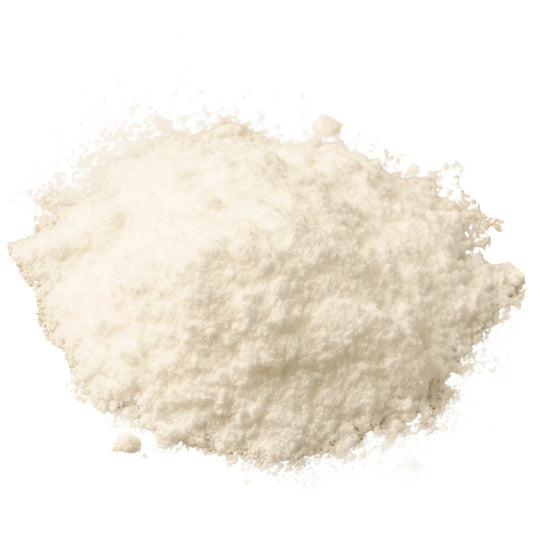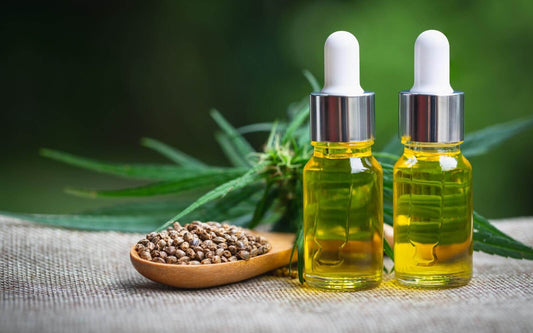
Body Butters For Beginners
Juliette van der MeerBody butters are super simple products that, despite their simplicity and the range of much 'fancier' products available, have never lost their appeal over the years. They are rich and creamy, highly moisturising for the skin and great for all skin types. Best of all they are perfect introductions to DIY for the beginner formulator!
Let's chat a bit about the components of a body butter: body butters consist of butters and oils. Like most DIY products you can make them as simple or as complex as you like.
Types of Butters
Butters are of course the key ingredient in a body butter. At EN we stock a range of natural butters that come in organic and conventional, refined and unrefined/raw varieties.
Shea butter
A note on unrefined shea butter: it does have an 'unusual' scent! Some would describe it as earthy, smoky, or even a little poo-like. I don't personally mind the scent but some people can't stand it and it is a little hard to mask even with essential oils. If you don't think you will like it, please use refined shea butter which has a neutral scent.
Avocado butter
I love avocado butter because I find it slightly less greasy than shea butter and it sinks into my skin beautifully.
Cocoa butter
Unrefined/raw cocoa butter has the most glorious chocolate scent. Keep this in mind if you are sensitive to strong chocolatey scents, or want to add an essential oil that may clash with it. Citrus scents or vanilla go well with chocolate, but other scents may just be weird.
Mango butter
Also less greasy than shea butter.
- Fancy variation: you can use 50% of one butter and 50% of another butter for a butter blend!
Types Of Oils
We add an oil to the butter to make it a little more soft and whippy. Try to go for oils that are relatively light and not too greasy, although this is up to you and you are welcome to use just about any carrier oil.
Recommendations:
You could also try something more extravagant such as Squalane.
- Fancy variation: You are also welcome to use two or more oils instead of just one, or even use an infused oil if you are making them.
Extras
- To cut greasiness, we always add in a bit of Arrowroot powder, or you can use cornstarch.
- Vitamin E oil is lovely to add for its skin benefits and it is also an antioxidant.
- Essential oils are great for adding a scent.
- A pinch of Mica for a beautiful glow. You can add as much as your heart desires.
We like to whip our body butters, because if you don't you get a very plain balm-like consistency, and we want the result to be buttery. Whipping up adds some lightness to the texture and gives a soft fluffy appearance. It will also feel nicer.
Basic Whipped Body Butter Formula
Ingredients:
- 59% shea butter or other butter of choice (take note of the variations below)
- 30% oil(s) of choice
- 10.5% arrowroot powder
- 0.5% vitamin E oil
- Jar or Tin
You can cold process this recipe (meaning no heating or melting of ingredients), or you can melt it and let it reset, it's up to you.
Method:
Cold Process
- Weigh out your ingredients.
- Mash the shea butter up to make it more workable.
- Add the rest of the ingredients.
- Beat with an electric beater until it is well mixed and fluffy. It will lighten in colour a bit.
- Once it is smooth and whipped you can decant it into a jar or tin. Apply less than you think you will need as a little goes a long way with butters!
Hot Process
- Weigh out your ingredients. You will need to hot process the body butter if you are using a hard butter such as cocoa butter. Shea, avocado and mango butters should be fine to cold process but you are welcome to hot process them as well if it is easier for you.
- Melt the shea butter by itself in a hot water bath (bowl containing the shea butter over a pot of simmering water), or in quick bursts in the microwave.
- Once melted, blend in the rest of the ingredients and stick it in the fridge for 20 minutes or until it just starts to solidify.
- Remove it from the fridge and whip it with an electric beater until smooth and fluffy.
- Decant the mixture into a jar or tin and enjoy.





















6 comments
Hi Gaynore, that will completely change the formula. But feel free to experiment and test!
Hi
Can I use cetyl alcohol or Eco E wax instead if arrowroot.
Hi Irene, that’s lovely to hear :)
Yes, stearic acid is an excellent addition to prevent melting. We actually have a body butter recipe here that includes it so check it out:https://essentiallynatural.co.za/blogs/body/body-butter-for-stretch-marks
Hi there!
I’m enjoying experimenting on variations of this formula. I wanted to ask if stearic acid would be a good addition to make the butter less likely to melt during shipping and the warmer months of the year in comparison to adding cetyl alcohol? And at what recommended %?
Thank you kindly
Hi Lindo, yay we’re so glad you like everything!
You can incorporate squalane as part of your oils.
Hyaluronic acid is water based so you’d need to make an emulsified body butter to use it. Check out our other blog on Emulsified Body Butters for recipes and ideas.